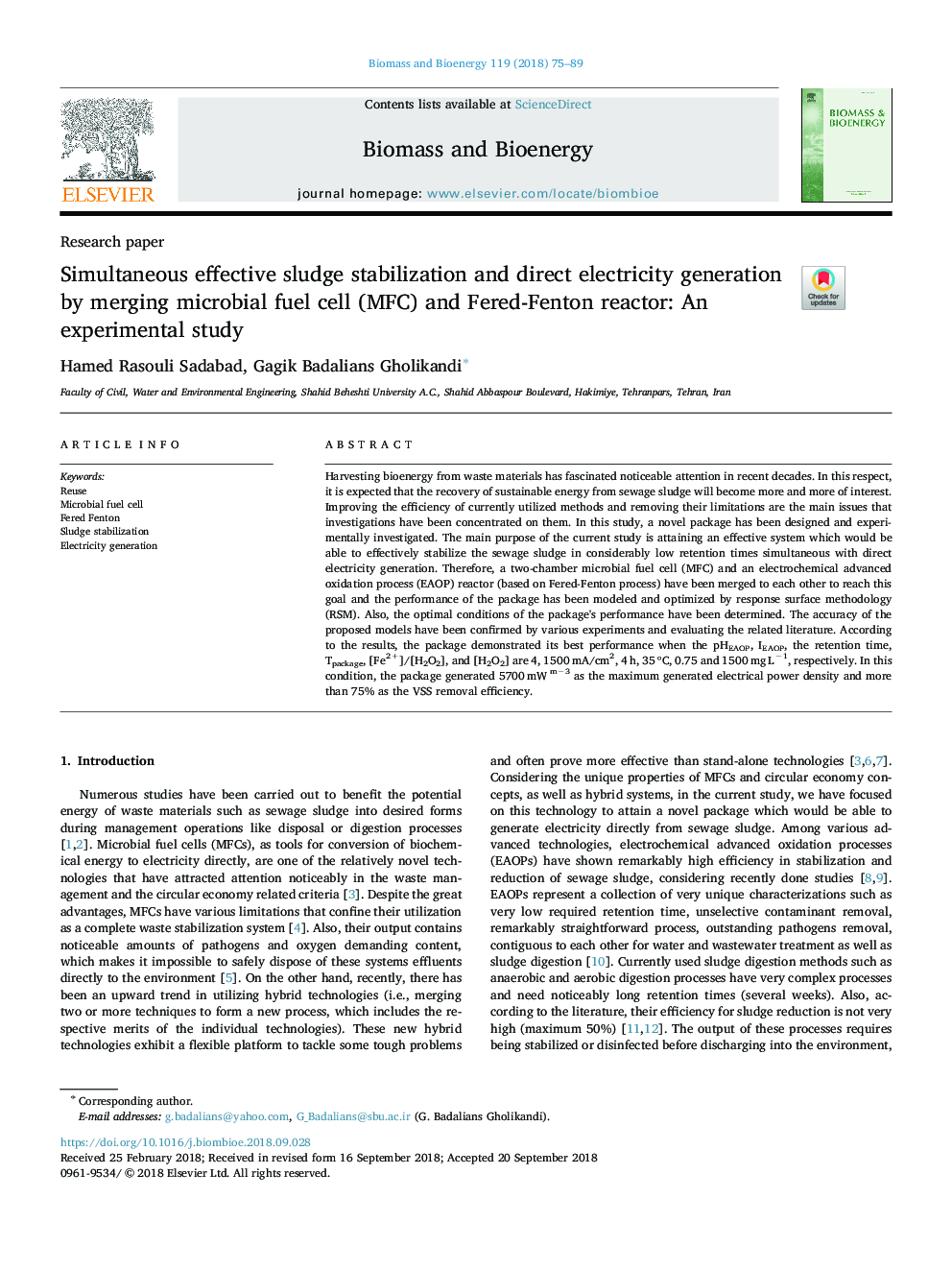| Article ID | Journal | Published Year | Pages | File Type |
|---|---|---|---|---|
| 11027901 | Biomass and Bioenergy | 2018 | 15 Pages |
Abstract
Harvesting bioenergy from waste materials has fascinated noticeable attention in recent decades. In this respect, it is expected that the recovery of sustainable energy from sewage sludge will become more and more of interest. Improving the efficiency of currently utilized methods and removing their limitations are the main issues that investigations have been concentrated on them. In this study, a novel package has been designed and experimentally investigated. The main purpose of the current study is attaining an effective system which would be able to effectively stabilize the sewage sludge in considerably low retention times simultaneous with direct electricity generation. Therefore, a two-chamber microbial fuel cell (MFC) and an electrochemical advanced oxidation process (EAOP) reactor (based on Fered-Fenton process) have been merged to each other to reach this goal and the performance of the package has been modeled and optimized by response surface methodology (RSM). Also, the optimal conditions of the package's performance have been determined. The accuracy of the proposed models have been confirmed by various experiments and evaluating the related literature. According to the results, the package demonstrated its best performance when the pHEAOP, IEAOP, the retention time, Tpackage, [Fe2+]/[H2O2], and [H2O2] are 4, 1500â¯mA/cm2, 4â¯h, 35 áµC, 0.75 and 1500â¯mgâ¯Lâ1, respectively. In this condition, the package generated 5700â¯mWâ¯mâ3 as the maximum generated electrical power density and more than 75% as the VSS removal efficiency.
Related Topics
Physical Sciences and Engineering
Chemical Engineering
Process Chemistry and Technology
Authors
Hamed Rasouli Sadabad, Gagik Badalians Gholikandi,
